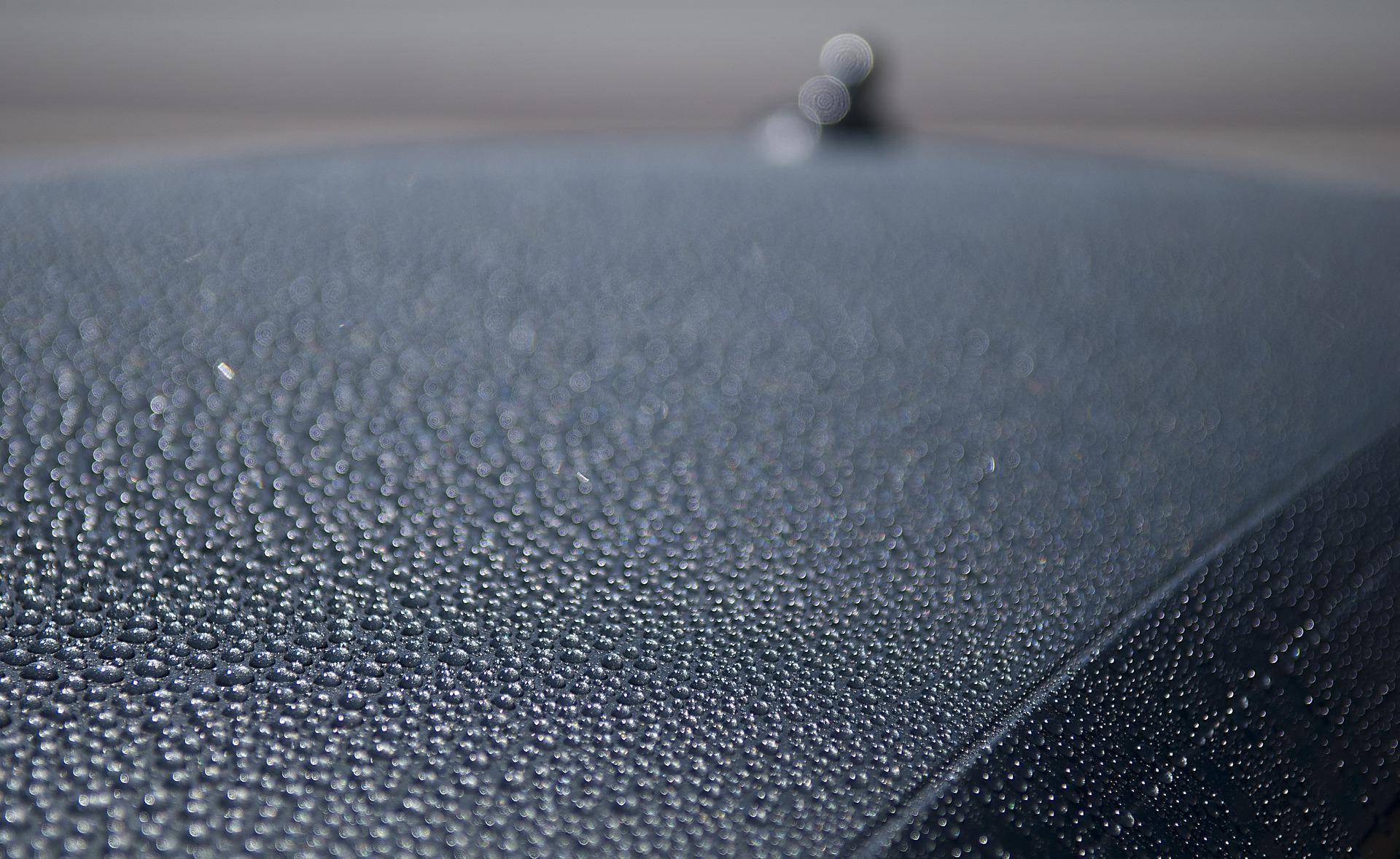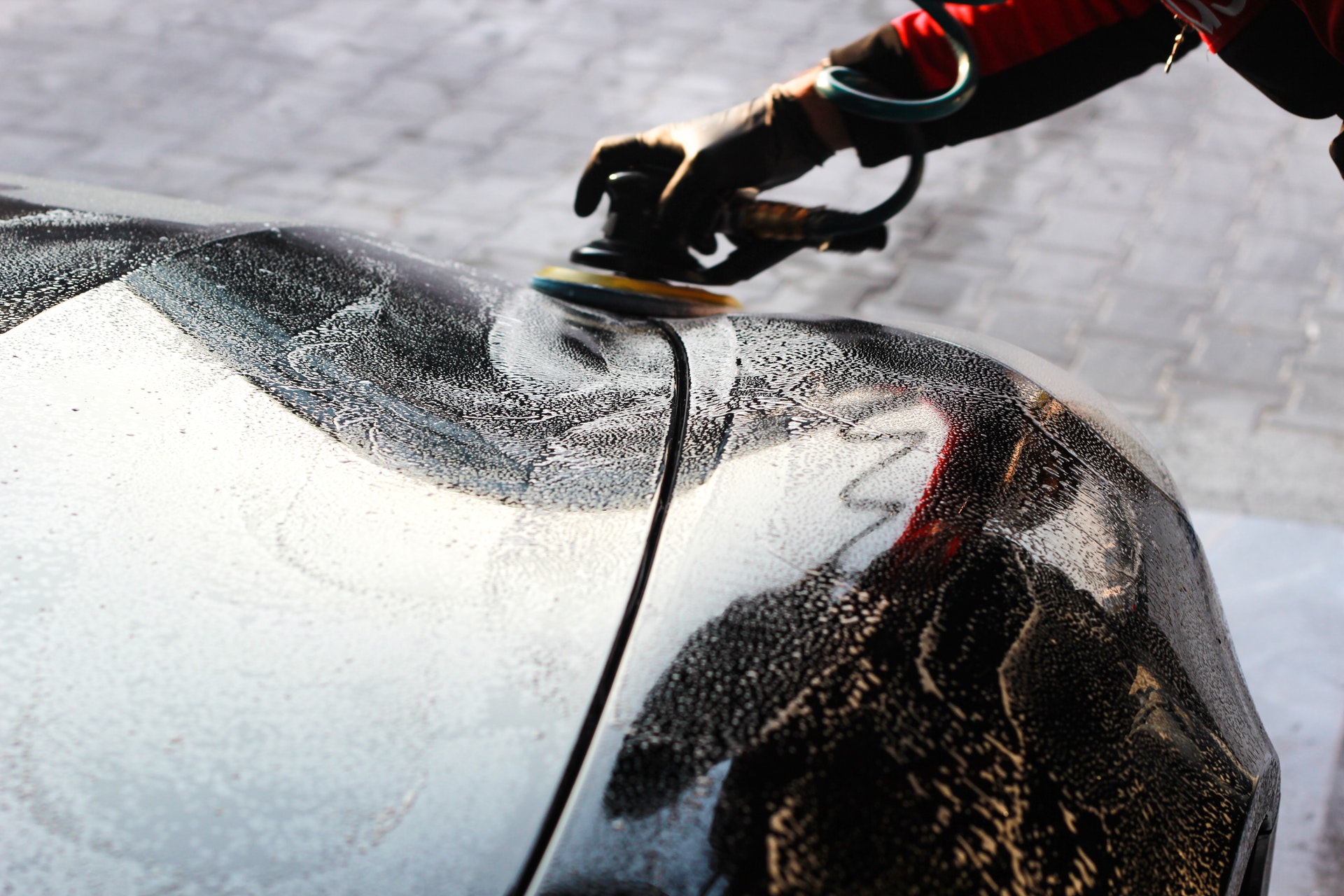当涉及到汽车清洗,这不是unreasonable to want to find the fastest, easiest and most efficient way to get the job done.
There are all sorts of gadgets, gizmos and supposedly innovative products that are designed to make car cleaning and detailing less of a chore.
For example, in recent years we’ve seen the rise of wash and wax products (such as Meguiar’s Ultimate Wash & Wax) which aim to combine car wash and car wax into one easy-to-use solution. You can read more here about whether or not wash and wax products are worth using.
Another “innovation” in car detailing is spray wax.
With spray wax, it is supposed to be easier than ever to “wax on and wax off” like this guy:

Spray wax products promise all sorts of amazing benefits and performance, all while being much faster and easier to use than regular paste or liquid waxes.
However, does spray wax even work? And is spray wax bad for your car?
In this article, we are going to look more at the pros and cons of using spray wax.
Is Spray Wax Bad For Your Car’s Paintwork?

No, not at all.
There is a weird urban myth/e-legend that seems to be doing the rounds in some parts of the web that spray wax is actually damaging to your car’s paint.
This simply isn’t true.
Provided you follow the directions of the product you select, spray wax isn’t going to damage your car’s paintwork.
The argument against using it is not because of its inherent danger or risk (this is as opposed to using something like a car drying blade to dry your car, which does come with a disproportionate risk of scratching your paintwork) … the reason enthusiasts don’t typically rave about spray wax is because its formulation and structure means that it does not typically last very long and the results in terms of finish enhancement generally aren’t as good as liquid/paste wax.
In effect, spray wax is not bad for your car. It is just intended for a different purpose than what it is typically marketed as being suitable for.
Why Use Spray Wax?

There is one main argument for the use of spray wax products, and that is convenience.
It is simply much easier and faster to wax your car when you can spray on and wipe off, than when using a paste wax or even a liquid likeMeguiar’s Ultimate Liquid Wax.
If time is short, then using spray-based wax is better than using nothing at all.
与许多ca喷雾蜡也很受欢迎r detailing enthusiasts as a means of “topping up” your paint’s protection and bringing additional shine and pop to your paintwork.
For example, if you invest the time and effort into fully detailing your car, then you want to preserve that hard work for as long as possible. This is where spray wax can be a great choice. Let’s say you then wash your car every fortnight after your full detail – each time you wash you could apply spray wax to top up the protection your paintwork is getting, and also to make your car look as good as possible.
For little extra time and effort, you can leverage the benefits of spray wax to enhance what you have already been doing to detail your car.
Look at this category of product as a means to build on the detailing/cleaning work you are already doing, and there is suddenly much greater benefit and value.
Recap – Is Spray Wax Any Good?

Spray wax products are ok in our view.
The big issue with spray waxes is that the marketing hype is often greater than the actual capabilities of the products (at least in general). If the marketing were more honest about what spray wax is good for, then public perception might be very different.
With spray wax there is an inherent trade off.
While you gain convenience/simplicity/speed of application, you lose out on finish quality and most importantly durability.
Compared to a quality liquid or paste wax like Meguiar’s Ultimate Liquid Wax, spray wax – even the higher end ones – won’t last for very long, and you will struggle to achieve the same depth of shine and water beading.
What this means is that spray waxes are best used for occasional “top ups”. For example, let’s say that you fully wax your car this weekend with a quality liquid or paste wax, and then you wash your car weekly thereafter. In a month’s time you might notice that your car’s wax finish isn’t looking as good as it did at the start, but you don’t want to go and re-wax your car properly. This is where spray wax would be a good interim solution until you are ready to properly wax your car again.’
If you are more serious about detailing your car, then you might even like to use a spray wax after each and every wax. This can help to bring out the luster and shine of your paintwork, and maximize the lifespan of your “proper” wax or sealant you have applied to the car.
However, despite the inferior durability of spray wax, it is not damaging or harmful to your car’s paintwork, provided you are following the instructions and using equipment that isn’t going to cause scratches (e.g. an old micro fibre buffing cloth that has dirt and grit embedded into it).
In fact, spray wax is actually good for your car. Given a choice between using a spray and no wax at all, you should pick the former any day of the week. It’s just that it isn’t as good as liquid/paste wax, and shouldn’t be seen as a direct substitute (despite often being marketed that way).




